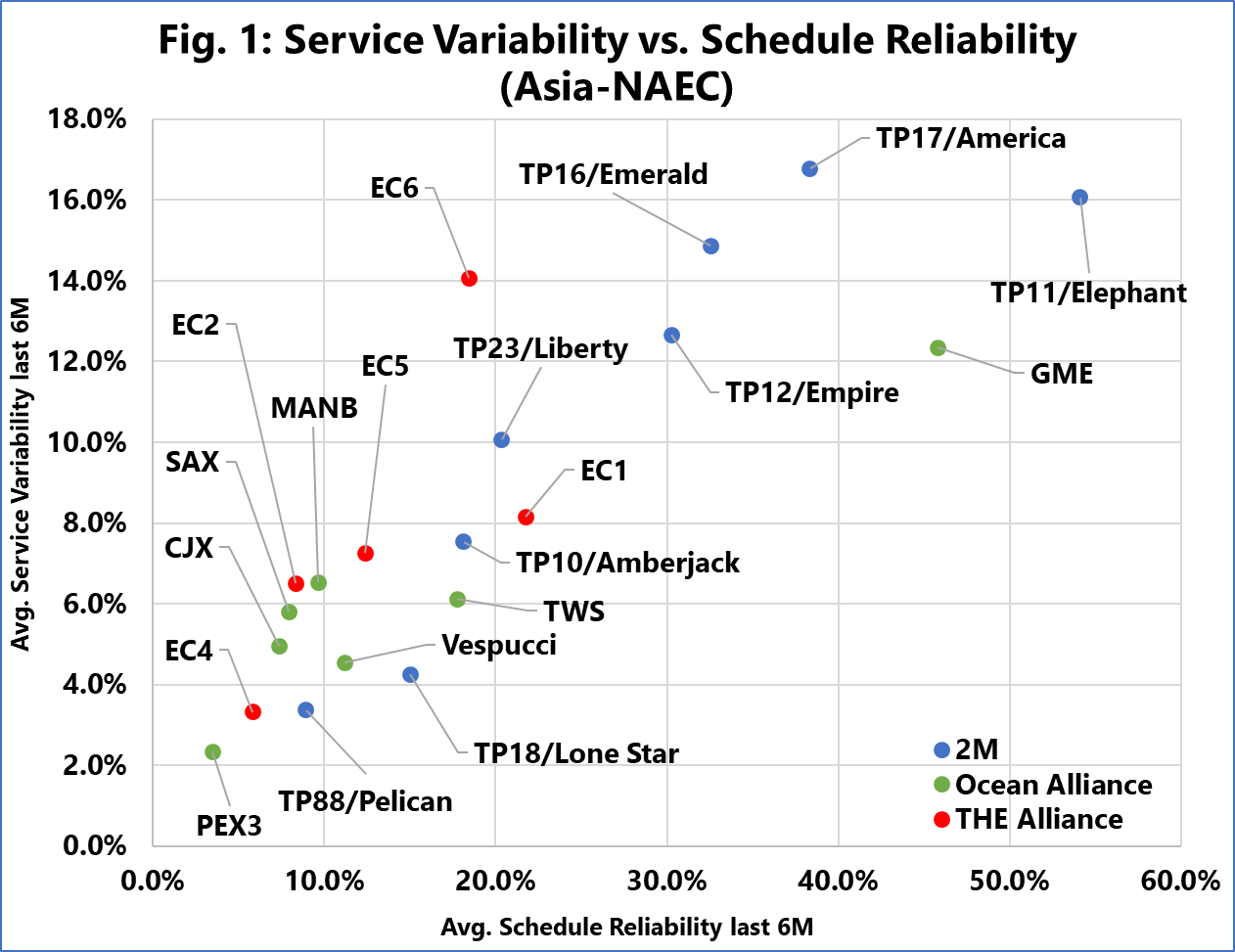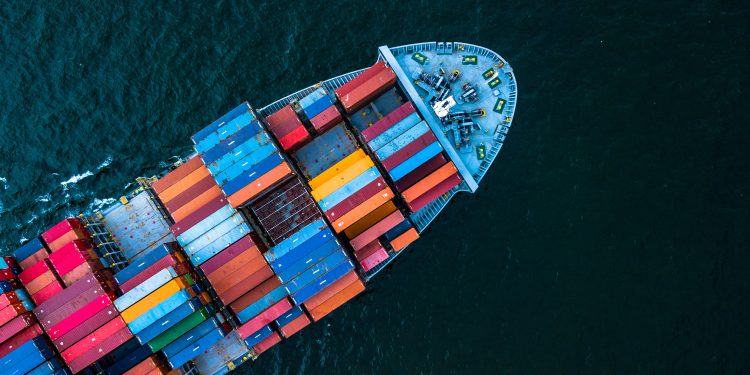To enable shippers to make more informed decisions in the liner shipping sourcing, Sea Intelligence analysed schedule reliability against service variability on the Asia-North America East Coast trade, over both the last six months as well as over the past 2-year pandemic period.
With incredibly poor schedule reliability across the entire liner shipping industry, it is often instructive to find those marginal gains: which carrier/service/port-pair offers that slightly better service level. It might be that carrier X offers a 5 percentage point advantage over the rest across a certain scope, or maybe, shipping on service ABC might get your cargo to the destination with a delay of 5 days, instead of 10 with the rest.
[smlsubform prepend=”GET THE SAFETY4SEA IN YOUR INBOX!” showname=false emailtxt=”” emailholder=”Enter your email address” showsubmit=true submittxt=”Submit” jsthanks=false thankyou=”Thank you for subscribing to our mailing list”]
There is then the added complexity of service variability. We define it as the difference in schedule reliability from one week to the other. The important thing about service variability during the current disruptive environment, is the ability to effectively plan supply chain contingencies. For example, before considering schedule reliability, shippers would prefer a service that has a stable service level, and one that does not require exception handing in five out of the 10 weeks.
If we add schedule reliability to the mix, then shippers have a decision to make: Do shippers prefer a service with a middling level of schedule reliability, but one that is consistent at that level, thus minimizing exception handling, or do they prefer a service that has a high level of schedule reliability in as many months as possible, but may require excessive exception handling in the months that it does drop down
said Sea Intelligence.
As it explains in its infographic, operators would ideally want a service on the bottom right-hand side i.e. high reliability and low variability. However, that it is not the case, and that relatively more reliable services often come with the caveat of a greater level of monthly volatility in their reliability, and hence the need for a greater level of exception handling.































































